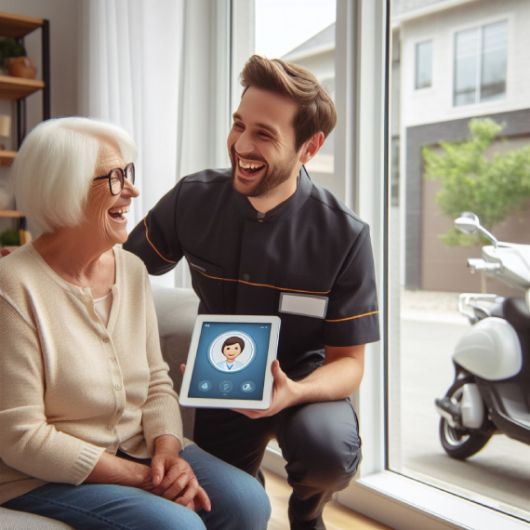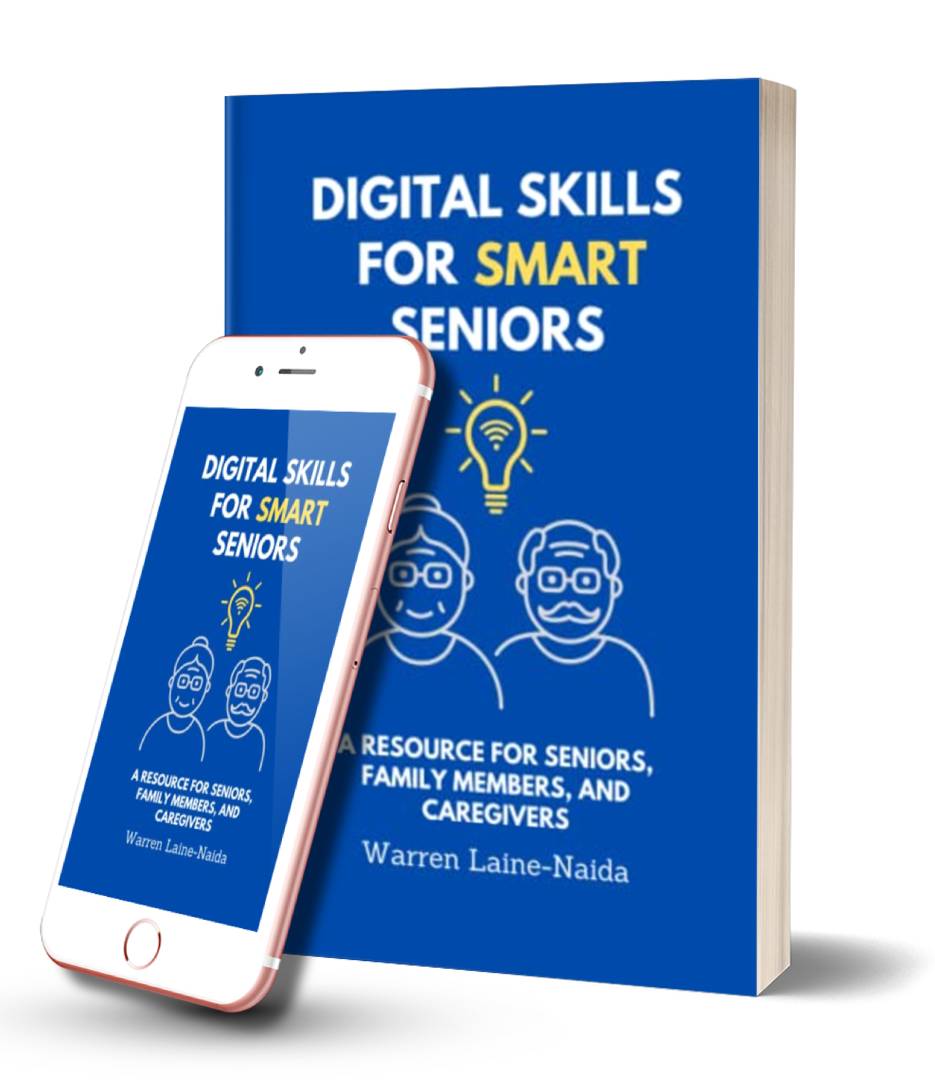Last Updated on January 22, 2024
Bridging the Digital Divide: Introducing Home Digital Care for Seniors
In our era of rapidly advancing technology, there is still a gap between the digital “haves” and the digital “have-nots”. Connected, cloud-based services are a chance to integrate services and improve the lives of many. It’s a simple question of accessibility.
The Internet of Things means everything from prescriptions and medical services, to community and personal care needs can be combined. But how to access these services and help users understand and manage their unique requirements? Enter the innovative concept of Home Digital Care.

Nowhere is the demand for one on one care more evident than in the Home Care sector, particularly services tailored to seniors. A group that often feels left behind by digital services and tools, seniors are in need of a bridge to cross the digital divide.
This has placed the need for easier access to services and data at the top of the priority list for new business solutions in home care. The benefits: time saving on the part of carers, more effective and efficient processes for business and government, and most important, self-empowerment of seniors.
The problem with the term “seniors” is that it covers people between the ages of 55 and onwards. No other demographic is so unclearly defined. And yet, it is one of the largest demographics – especially in Germany where almost 50% of the population is over 50 years of age.
Within this fifty year demographic are millionaires and those living under the poverty line. It includes people who use digital on a daily basis – SMART seniors and workers, and those for whom a smartphone is a luxury, or perhaps as strange or useless as a computer was to people in the 1930s.
Humanizing Technology: The Potential of Home Digital Care
This initiative brings a human touch to technology assistance, where a caregiver (student or professional) visits homes to help resolve digital issues. What issues? It could be as minor as help installing a necessary app. It could be as important as guiding the user through the steps of setting up online banking to pay bills.
It’s not just the elderly who stand to benefit either. Anyone homebound due to various circumstances could be in need of home digital care.
Chatbots could solve the problem, you think? I think that social connections are more important. Personal interaction could facilitate better understanding and greater trust in using digital tools, which are becoming indispensable in everyday life.
The Future of Training the Trainer
The potential for such a program is limitless, particularly when integrated into the burgeoning Influencer Economy. Imagine a series of podcasts and instructional videos created by digital home care workers for their peers.
These resources would provide ongoing training, share best practices, and help standardize the quality of digital care across the board. Through shared learning, a community of digital care workers could emerge, growing stronger and more efficient with each shared experience.
Community and Connectivity: Envisioning a Digital Care Hub for All Ages
Visualize a community centre that serves as a hub for this digital revolution—a place where seniors who can manage the walk could receive assistance and where digital care workers zip out on mopeds to aid those who can’t.
What’s more, the Home Digital Care program can tap into the vibrant energy of high school students by linking with local schools. By offering this initiative as an elective course, students can earn credits while providing community digital care.
This symbiosis not only fosters community spirit but equips the younger generation with skills and experiences that are both educational and ethically rewarding.
The caveat to this exciting solution, however, lies in funding.
Private Sector Empowerment: Championing Digital Inclusivity Through Home Digital Care Partnerships
Government funding may not readily flow into such initiatives, but this is where private investment and industry partnership can play a pivotal role.
Forward-thinking companies, aware of the importance of nurturing tomorrow’s customer base, may find this opportunity particularly compelling. Tech giants, healthcare providers, and CSR-focused corporations could be ideal sponsors for the Home Digital Care initiative.
As industries increasingly recognize the value of caring for their future consumers, the Home Digital Care model could be a beacon of social responsibility, blending the lines between business and community service.
It’s an opportunity to invest in a program that doesn’t just serve the present but also sows the seeds for a digitally inclusive future for everyone, irrespective of age.
With private enterprise stepping up where government leaves a void, the Home Digital Care initiative could become a testament to the power of compassionate capitalism in the digital age.
It addresses an age-old issue with a simple mantra: Just do it.
*Note: Until 2011, there was a 1 year of national service in Germany, where I live. You worked in a hospital or care facility, or the army – where you could learn many useful trades. 12 years later it isn’t surprising that there is currently a lack of caregivers, truck drivers, and tradespeople in Germany. Having a year of national service as a Digital Caregiver was at the heart of my original idea.
Digital Skills for Smart Seniors
A Resource for Seniors, Family Members, and Caregivers
This book offers information for interested Seniors who have little or no digital experience, as well as for caring relatives and professional caregivers. (03/2023)

Post image “Digital Care Giver” Generated with DALL-E Bing AI ∙ November 3, 2023 at 6:55 PM